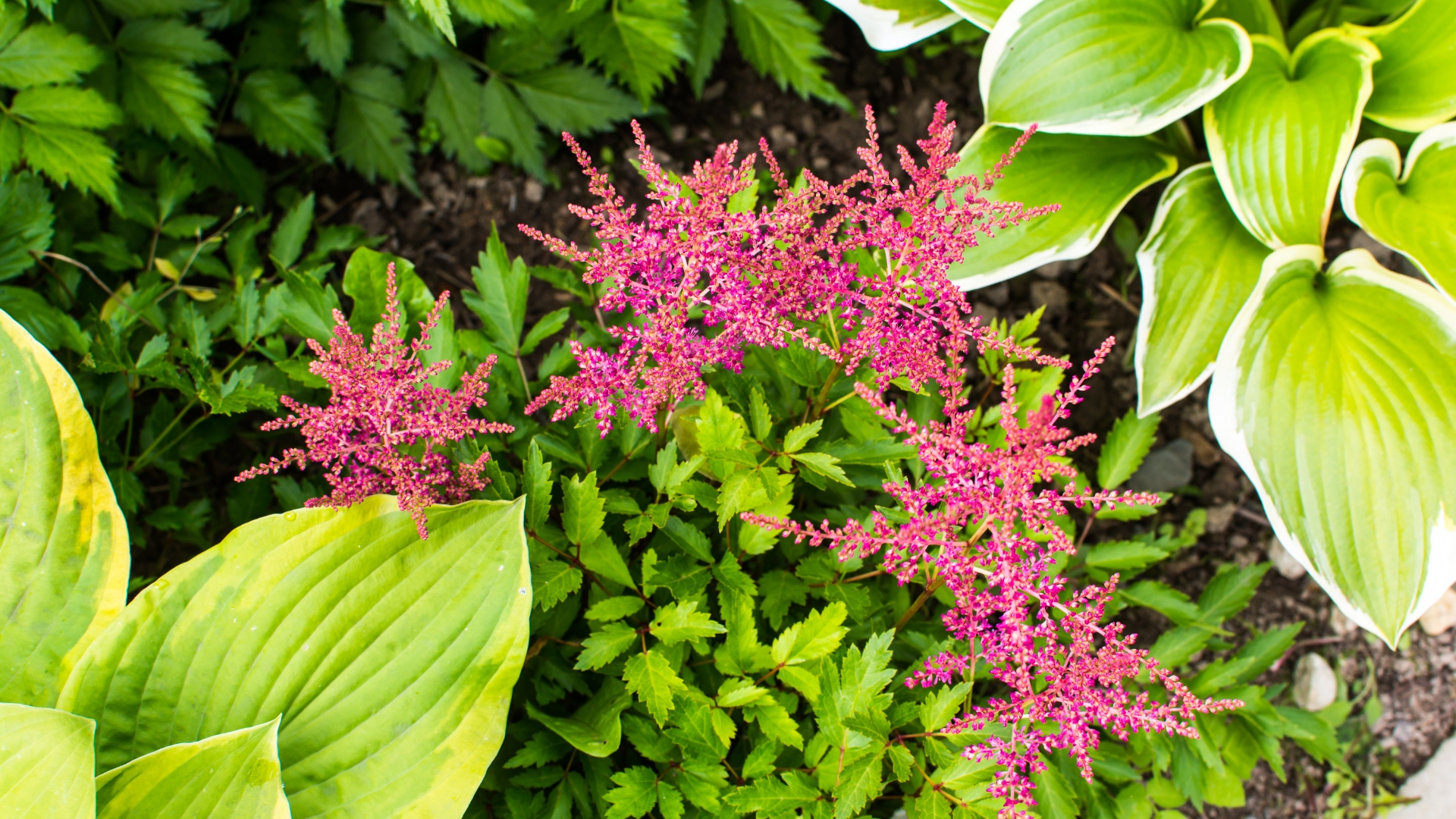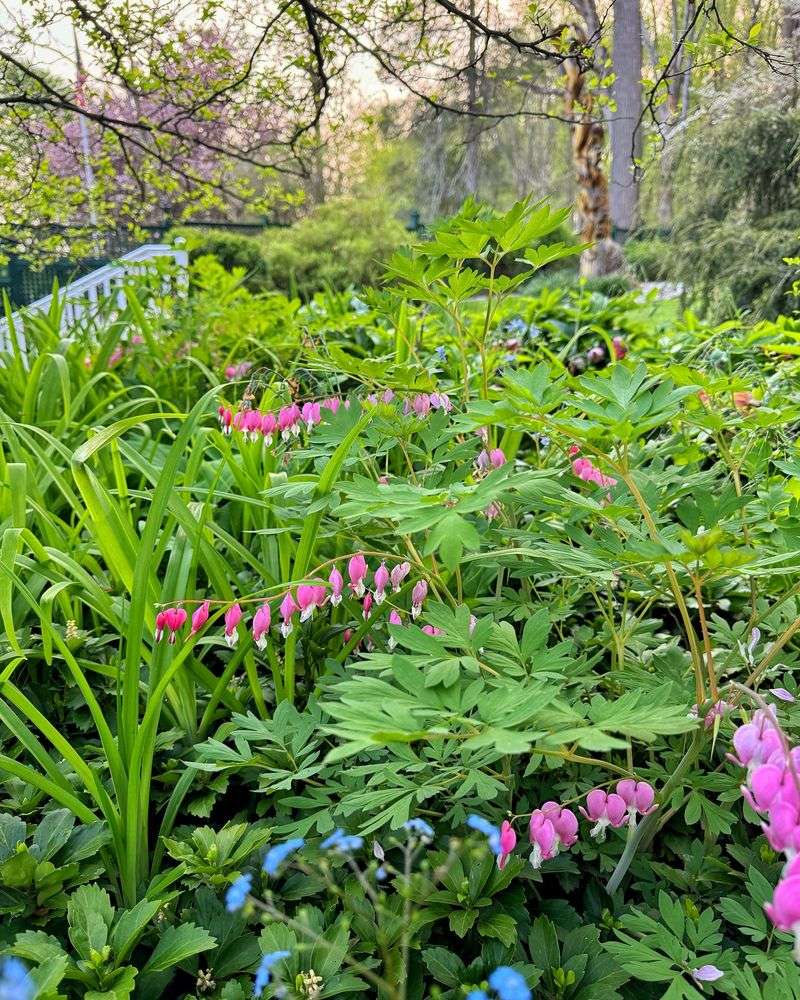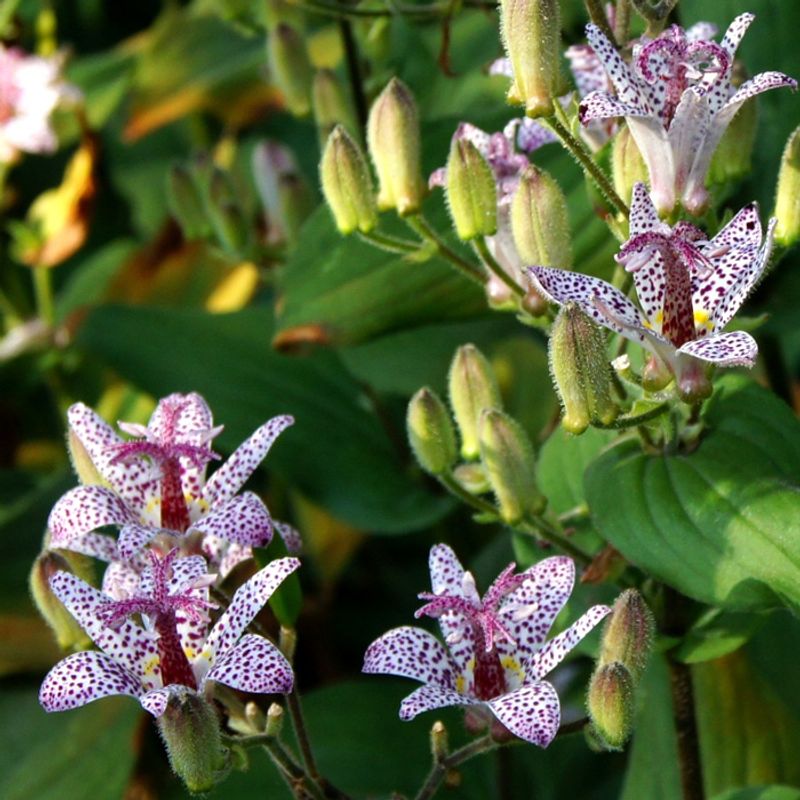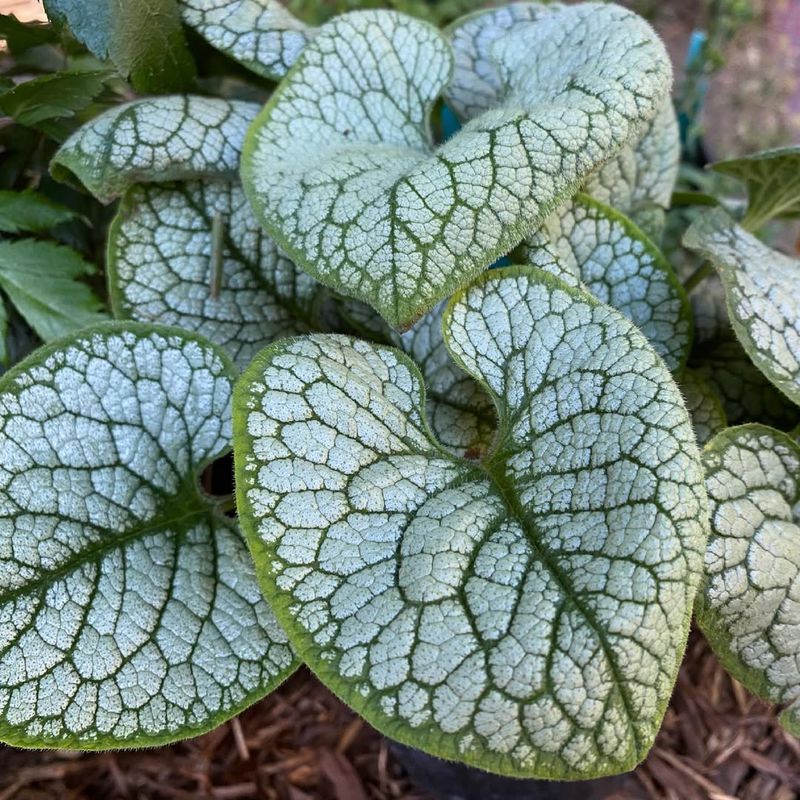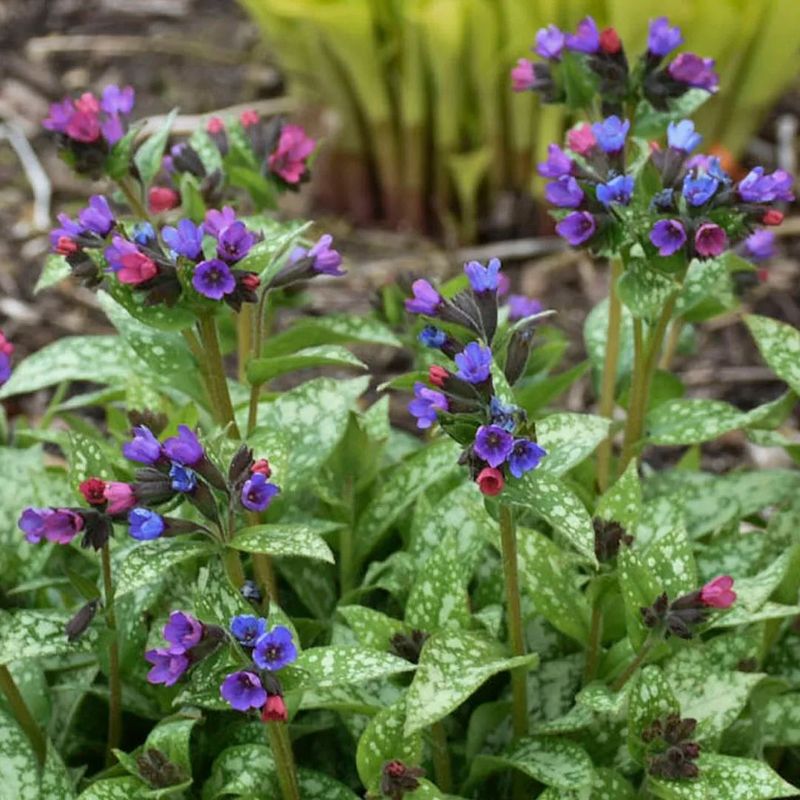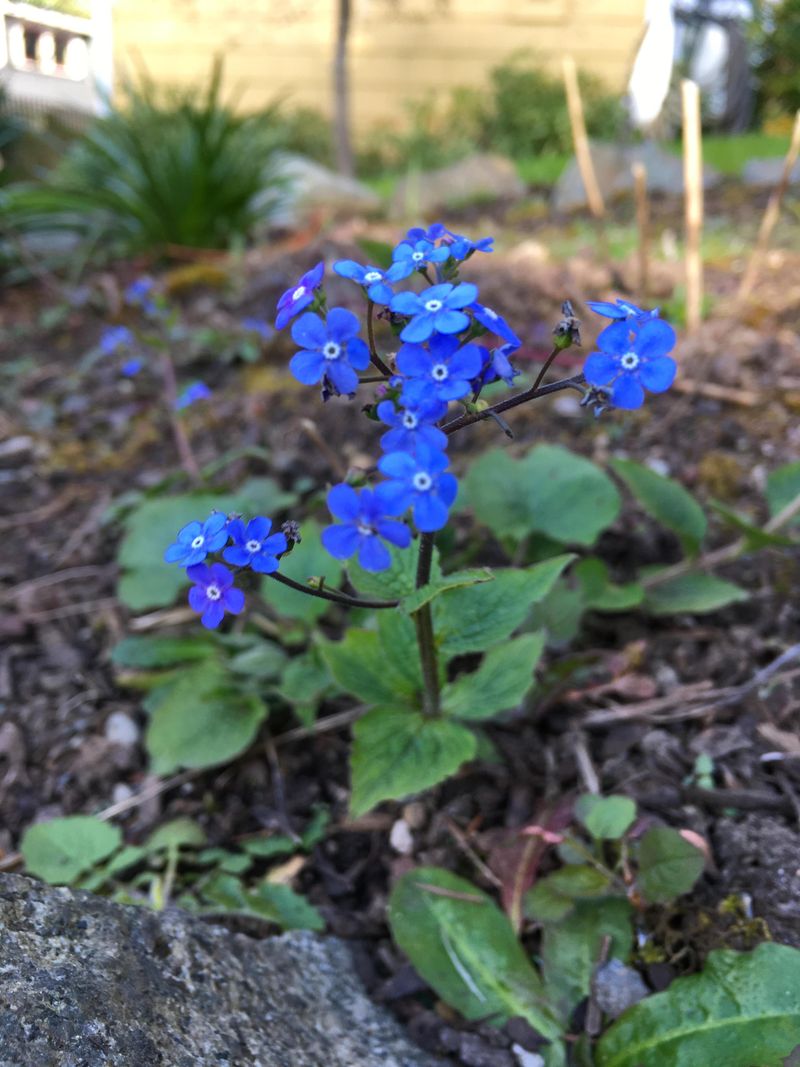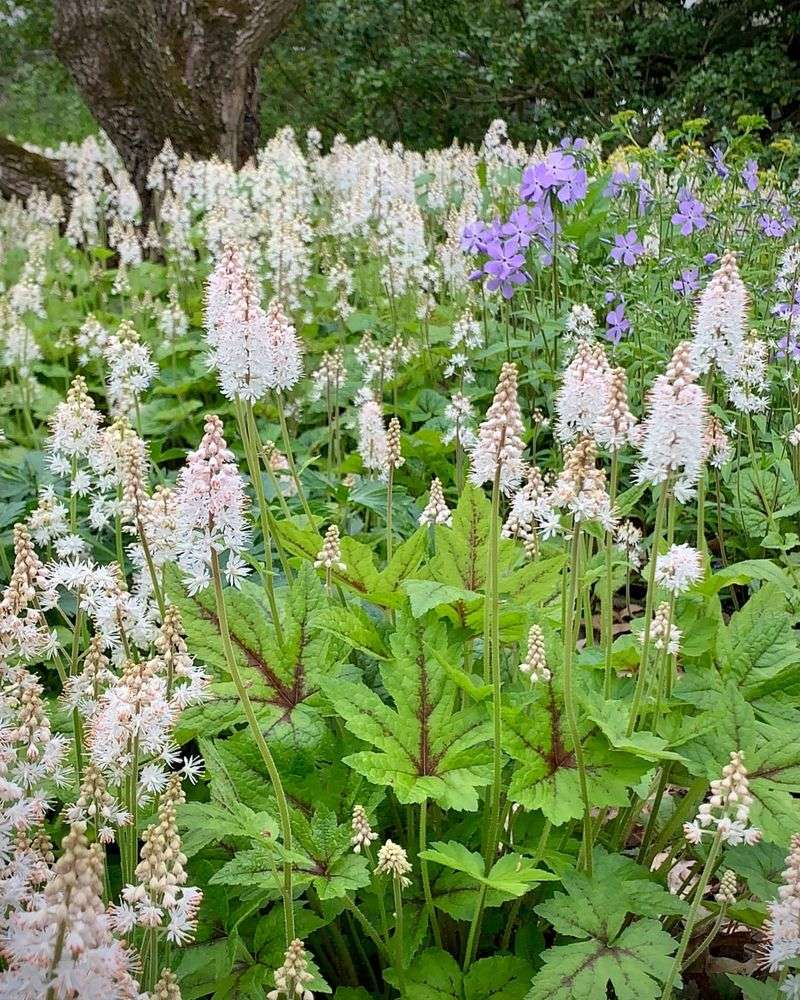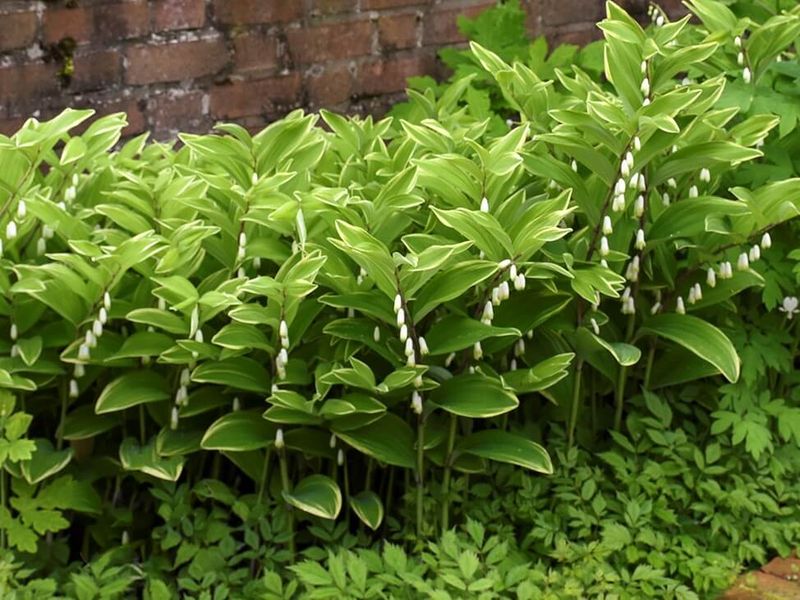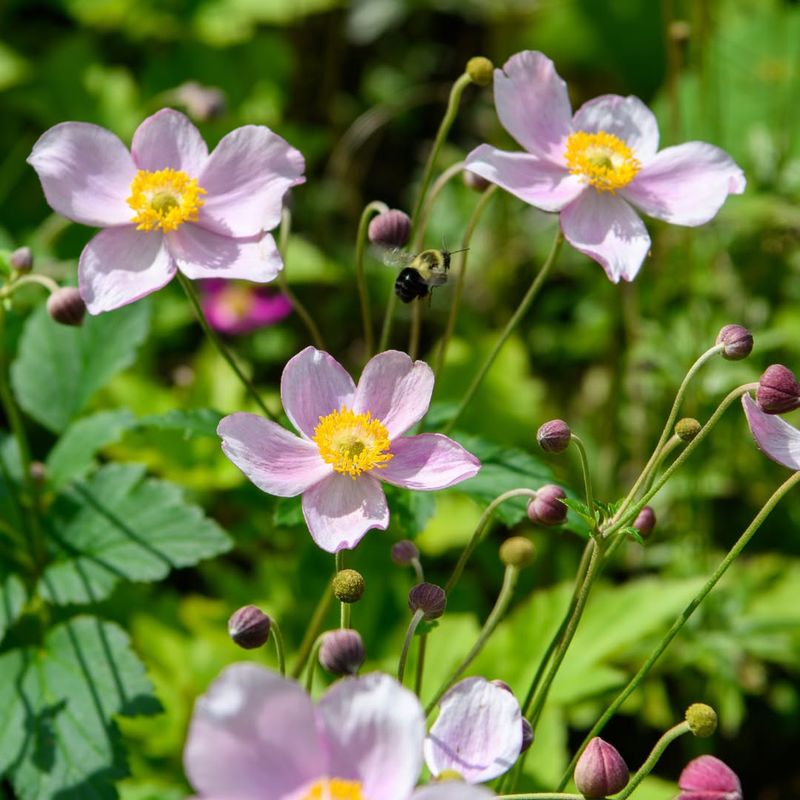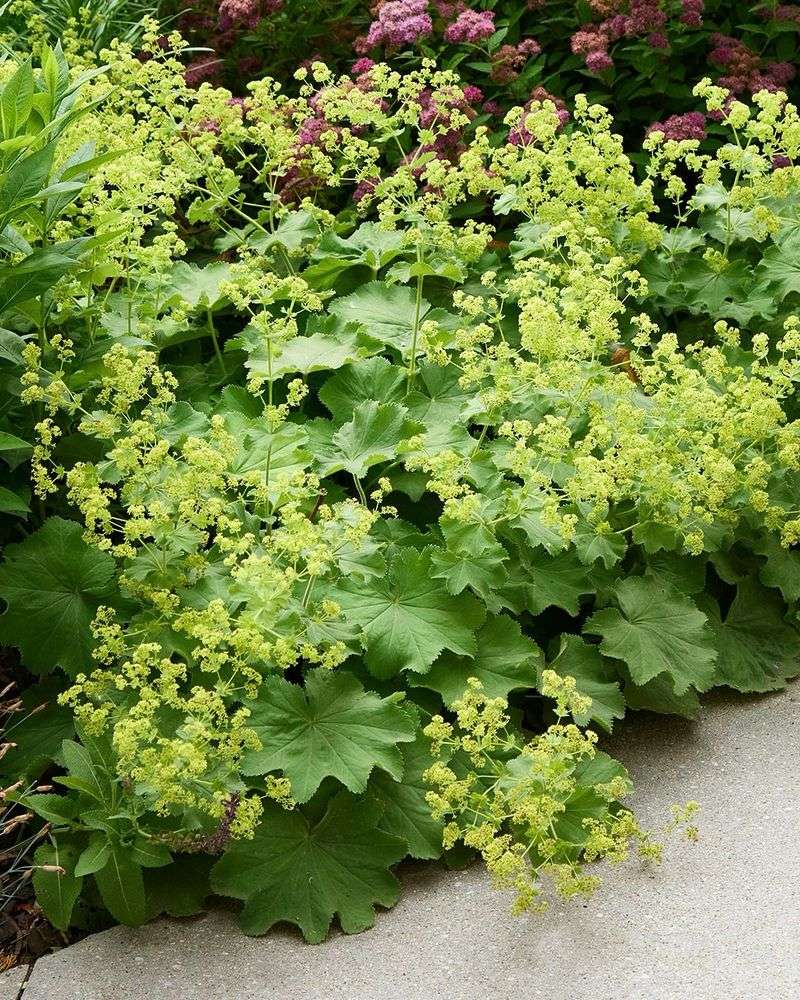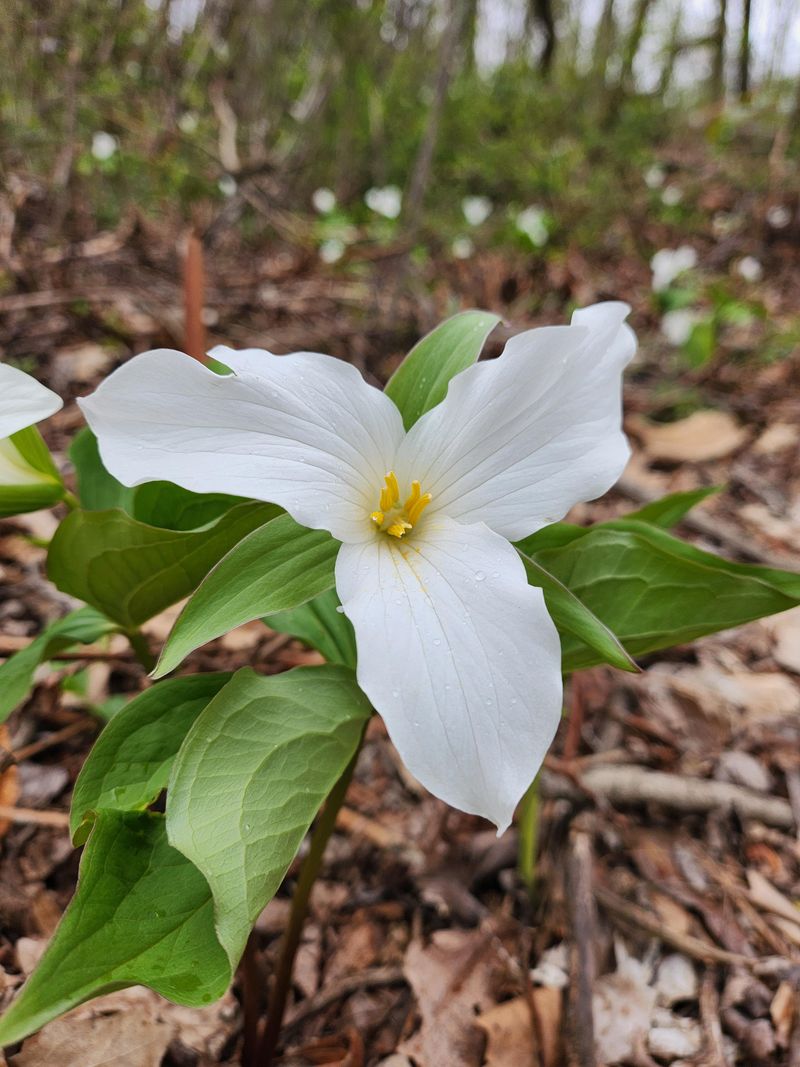Astilbes are beautiful, shade-loving plants that add a splash of color to any garden. Pairing them with the right companion plants can enhance their beauty and promote healthier growth. This guide explores 18 perfect companion plants that not only coexist harmoniously with astilbes but also support a thriving garden ecosystem.
1. Hostas
Hostas are known for their lush foliage and ability to thrive in shaded areas, making them perfect partners for astilbes. Their broad leaves provide a contrasting backdrop to the feathery plumes of astilbe flowers.
Planting hostas next to astilbes helps in retaining moisture in the soil, benefiting both plants. Hostas come in various shades of green and blue, adding depth to your garden.
Consider mixing different hosta varieties to create a textured look. Their adaptability and low maintenance make them a favorite among gardeners who appreciate their elegant appearance.
2. Ferns
With their intricate fronds, ferns will provide a delicate contrast to astilbe’s blooms. These plants thrive in similar environments, preferring shaded, moist areas.
Their ability to spread and cover ground helps in weed suppression, creating a cleaner garden space. Ferns come in various sizes and shapes, offering versatility in garden design.
Consider using them to create a woodland atmosphere, where the lush green of ferns complements the vibrant colors of astilbes. They are also excellent for erosion control on slopes.
3. Coral Bells (Heuchera)
Coral bells, with their vibrant leaves, add a splash of color even when not in bloom. Their foliage comes in shades like purple, red, and green, providing a stunning contrast to the bright flowers of astilbes. Both plants thrive in partial shade and prefer well-drained soil. Coral bells are drought-tolerant, which can reduce watering needs when paired with astilbes. Their compact size makes them great for borders and adding texture to garden beds. Enjoy their pretty flowers that attract pollinators, enhancing the biodiversity in your garden.
4. Japanese Forest Grass
Japanese forest grass adds a graceful, flowing element to gardens, with its arching blades providing movement next to the stately astilbe.
This grass thrives in shaded environments, matching the needs of astilbes. Its golden hues contrast beautifully with the vibrant astilbe flowers, creating a dynamic visual display. Japanese forest grass is also known for its low maintenance and ability to thrive in moist soils.
Consider using it as a ground cover or in mass plantings for a dramatic effect. This combination adds a sense of tranquility to any garden space.
5. Bleeding Heart
Bleeding heart plants are a classic choice for shade gardens, with their charming heart-shaped flowers adding a romantic touch.
When paired with astilbes, their pink and white blooms create a beautiful contrast against the vibrant colors of astilbe flowers. Both plants thrive in the same soil and light conditions, making them ideal companions. Bleeding hearts are early bloomers, providing color in spring when astilbes are just starting to grow. Their graceful, arching stems add elegance and movement, enhancing the overall aesthetic of your garden.
6. Toad Lily
Everyone loves Toad lilies for their exotic, orchid-like flowers with spots, adding intrigue to any garden. Pairing them with astilbes creates a magical garden atmosphere.
Both thrive in shaded areas and prefer moist, well-drained soil. Toad lilies bloom later in the season, extending the flowering period in your garden.
Their upright growth habit contrasts with the feathery plumes of astilbe, creating a dynamic visual texture. These plants also attract pollinators, which can help in maintaining a healthy garden ecosystem. Ideal for woodland gardens.
7. Brunnera
Often called false forget-me-not, Brunnera is valued for its heart-shaped leaves and delicate blue flowers. These plants thrive in the shade, making them perfect companions for astilbes.
Their small flowers add a touch of delicate beauty against the bold hues of astilbe blooms. Brunnera is low-maintenance and offers excellent ground cover, helping to suppress weeds.
Their foliage remains attractive throughout the growing season, adding texture and interest even when not in bloom. This combination is ideal for creating a lush, inviting garden space.
8. Lungwort
The distinctive spotted leaves and bright flowers make lungwor a standout companion for astilbes. Both plants enjoy the same soil and light conditions, thriving in shaded, moist areas.
Lungwort blooms in early spring, offering early color before astilbes take center stage. Its foliage remains decorative throughout the season, providing long-lasting interest.
Lungwort is also known for its ability to attract pollinators, enhancing garden biodiversity. Its compact growth habit makes it ideal for borders or as a ground cover, complementing the taller astilbe plumes.
9. Siberian Bugloss
Siberian bugloss is admired for its large, heart-shaped leaves and striking blue flowers. This perennial thrives in shade, making it a perfect companion for astilbes.
Their bold foliage creates a beautiful backdrop for the colorful astilbe blooms. Siberian bugloss is easy to grow, requiring little maintenance while providing excellent ground cover. Its vibrant flowers attract pollinators, promoting a healthy garden ecosystem.
This plant combination adds texture and visual interest to borders and shaded garden areas, making your landscape more inviting and dynamic.
10. Foam Flower
With their delicate, star-shaped blooms, Foam flowers bring an ethereal quality to gardens. Pairing them with astilbes enhances this effect, creating a dreamy landscape.
Both plants prefer shady, moist environments and share similar soil requirements. Foam flowers bloom in spring, adding early interest before astilbes take over. Their low-growing habit makes them excellent ground cover, while their flowers attract pollinators.
This combination creates a layered, textured garden bed that is both visually appealing and ecologically beneficial. Consider using them along pathways or in woodland gardens.
11. Solomon’s Seal
Solomon’s Seal is known for its graceful, arching stems and dangling white flowers, adding elegance to shaded gardens.
When paired with astilbes, they create a harmonious and visually striking combination. Both plants thrive in similar environments, preferring shady, moist conditions. Solomon’s Seal is also valued for its textured foliage, which remains attractive all season.
This plant helps in creating a layered look, adding height and structure to garden beds. It’s also drought-tolerant once established, making it a low-maintenance choice for gardeners.
12. Epimedium
Often called barrenwort, Epimedium is praised for its charming heart-shaped leaves and delicate flowers. These plants thrive in shady areas, making them ideal companions for astilbes.
Their foliage provides excellent ground cover, helping to suppress weeds. Epimedium blooms in spring, introducing color early in the season. Its adaptability to dry shade makes it a versatile choice for challenging garden spots.
The combination of epimedium and astilbe creates a lush, textural garden bed that’s both beautiful and functional, attracting pollinators and offering visual interest year-round.
13. Japanese Anemone
Japanese anemones bloom in late summer, extending the flowering season in gardens. Their bright white and pink blooms provide a stunning contrast against the vibrant astilbe flowers.
Both plants thrive in partial shade and prefer moist, well-drained soil. Japanese anemones are tall, adding vertical interest and structure to garden beds. Their flowers attract pollinators, helping to maintain a healthy garden ecosystem.
This combination adds a sense of elegance and continuity to your garden, with changing blooms that capture attention and create a dynamic visual display.
14. Cimicifuga (Black Cohosh)
Cimicifuga, or black cohosh, adds drama to gardens with its tall, dark foliage and striking white flower spires. This plant thrives in shaded, moist environments, making it an excellent companion for astilbes.
Its height adds vertical interest, creating a sense of depth and layering in garden beds. Cimicifuga’s flowers attract pollinators, enhancing garden biodiversity. This combination is perfect for creating a mysterious, enchanting garden space.
Consider planting them in the back of borders or as focal points, where their unique appearance can be fully appreciated.
15. Lady’s Mantle
Now a plant that is cherished for its soft, scalloped leaves and delicate yellow-green flowers. Lady’s mantle is a perfect companion for astilbes, thriving in similar shaded, moist conditions.
The foliage of lady’s mantle catches morning dew, adding sparkle to garden beds. Its flowers offer a subtle contrast to the bold astilbe blooms, creating a harmonious color palette.
Lady’s mantle is also known for its ability to attract beneficial insects, supporting a healthy ecosystem. This combination adds both visual interest and ecological value to garden spaces, making it a popular choice.
16. Hellebore
Winter-blooming hellebores are known for their beautiful, ornate flowers and evergreen foliage. They thrive in shaded areas, making them perfect companions for astilbes.
Hellebores bloom when most other plants are dormant, providing color and interest during the bleak winter months. Their flowers attract early pollinators, supporting garden biodiversity.
Once astilbes begin to bloom, the combination of hellebores’ evergreen leaves and colorful astilbe flowers creates a lush, year-round garden display. This pairing offers both beauty and ecological benefits, making it a gardener’s favorite.
17. Trillium
Trillium is a woodland perennial valued for its distinctive three-petaled flowers and rich foliage. This plant thrives in shaded areas, making it an excellent companion for astilbes.
Trillium blooms in early spring, adding color and interest before astilbes emerge. Its flowers attract pollinators, enhancing garden biodiversity. Once the flowers fade, trillium’s lush foliage continues to provide ground cover and visual interest.
The combination of trillium and astilbe creates a layered, textured garden that captures the essence of a natural woodland setting, perfect for shaded areas.
18. Ajuga
Also known as bugleweed, ajuga is a versatile ground cover known for its vibrant foliage and striking blue flower spikes. This plant thrives in shaded areas, making it an excellent companion for astilbes.
Ajuga’s dense growth helps suppress weeds, creating a tidy garden appearance. Its foliage comes in various colors, offering a striking contrast to astilbe’s colorful blooms. Ajuga is low-maintenance and spreads easily, making it ideal for filling in empty spaces.
This pairing creates a vibrant, dynamic garden bed that’s both visually appealing and functional, supporting a healthy garden ecosystem.

